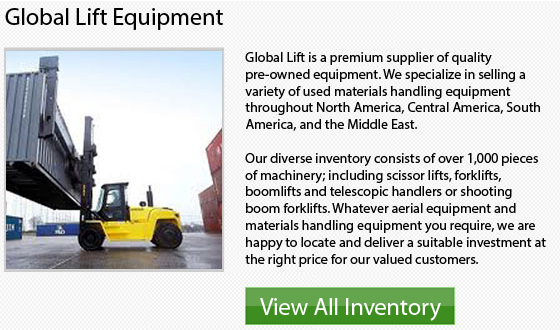
Counterbalanced Trucks: The rider truck is a sit down forklift known as a counterbalanced forklift. The counterbalance lift truck has been made in internal combustion and electric models. The lift truck is an important equipment in nearly all distribution centers and warehouses and are typically capable of lifting anywhere from 2500 to 12,000 lb. range depending on the specific unit. Counterbalanced trucks are able to lift cargo to as high as 20 feet, depending upon the truck's model and weight.
Amongst the biggest volume manufacturers of zero emissions electric lift trucks is Yale in the North American market. Yale is among the first adopters of energy efficient AC motor and control technology. Yale's continued pursuit of better energy efficiency is affirmed by competitive testing. This testing proves that Yale's 5000 pound electric rider product offers the best energy used per load transported or overall energy efficiency of any lift truck in its class in North America.
The spark-ignited units manufactured by Yale already meet or surpass the industry standard requirements. Yale trucks have been rated amongst the lowest in exhaust emissions by EPA and CEPA testing reviews. Their diesels are becoming cleaner all the time because of ongoing development with diesel engine suppliers so as to meet Tier III standards. These equipment also proactively meet upcoming Tier IV standards.
Yale has also engineered their IC products for extended service intervals to be able to reduce changes in oil and reducing consumption of this nonrenewable energy source for their clients.
Yale has introduced and developed an innovative and electronically controlled transmission that greatly lessens brake and tire wear from their Internal Combustion Engine forklift clients. When it comes to their electric trucks, the company has introduced a system which recaptures energy into the truck during the lowering of loads and during braking. This energy is then used again, lowering the truck's overall energy consumption. The company takes pride in lessening non-productive energy use throughout the vehicle by means of weight reduction, hydraulic system efficiency and patent pending, drive train components.